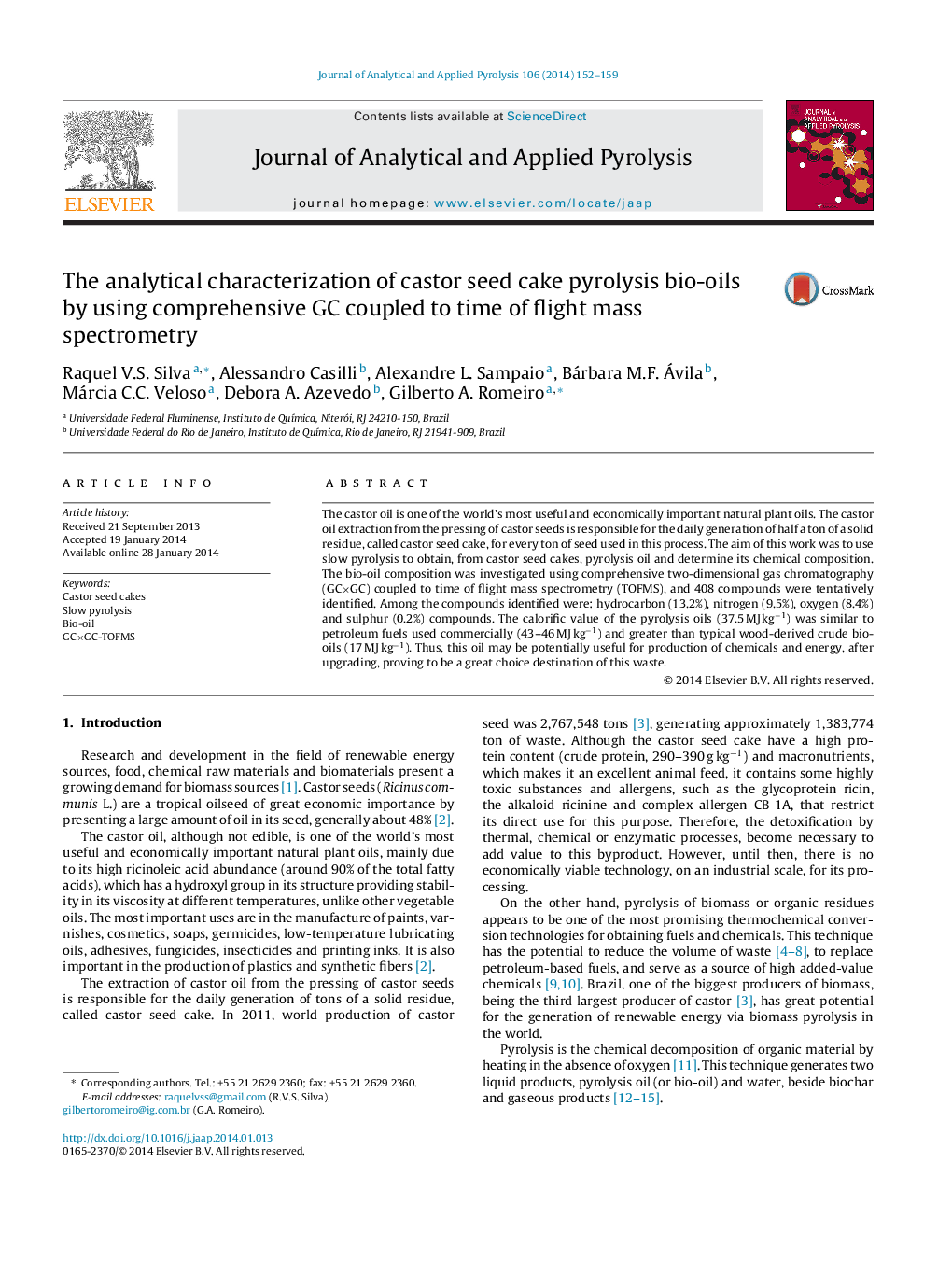| Article ID | Journal | Published Year | Pages | File Type |
|---|---|---|---|---|
| 1196870 | Journal of Analytical and Applied Pyrolysis | 2014 | 8 Pages |
•Pyrolysis oil from castor seed cake was obtained by slow pyrolysis parameters.•The pyrolysis oil was analyzed in crude form using GC×GC-TOFMS.•408 compounds were tentatively identified.•Among the compounds identified were: hydrocarbon (13.2%), nitrogen (9.5%), oxygen (8.4%) and sulphur (0.2%) compounds.•The bio-oil may be potentially useful for production of chemicals and energy.
The castor oil is one of the world's most useful and economically important natural plant oils. The castor oil extraction from the pressing of castor seeds is responsible for the daily generation of half a ton of a solid residue, called castor seed cake, for every ton of seed used in this process. The aim of this work was to use slow pyrolysis to obtain, from castor seed cakes, pyrolysis oil and determine its chemical composition. The bio-oil composition was investigated using comprehensive two-dimensional gas chromatography (GC×GC) coupled to time of flight mass spectrometry (TOFMS), and 408 compounds were tentatively identified. Among the compounds identified were: hydrocarbon (13.2%), nitrogen (9.5%), oxygen (8.4%) and sulphur (0.2%) compounds. The calorific value of the pyrolysis oils (37.5 MJ kg−1) was similar to petroleum fuels used commercially (43–46 MJ kg−1) and greater than typical wood-derived crude bio-oils (17 MJ kg−1). Thus, this oil may be potentially useful for production of chemicals and energy, after upgrading, proving to be a great choice destination of this waste.
